This article was co-authored by Peter D'Aquino, L.Ac, MS, NCCAOM and by wikiHow staff writer, Amber Crain. Peter D'Aquino is an Acupuncturist and Diplomate in Oriental Medicine based in New York City. Peter is licensed to practice in New York State and holds board certification by the National Certification Commission for Acupuncture (NCCAOM) and Oriental Medicine in acupuncture and Chinese herbal medicine. He has 10 years of experience practicing holistic pain management and sports medicine. He specializes in treating pain and orthopedic conditions along with rehab, fitness, weight loss, and digestive issues. He is also certified as a Personal Trainer by The National Academy of Sports Medicine (NASM) and certified in Functional Range Conditioning (FRC) and Functional Range Release (FRR) movement therapy. He holds an MA in Acupuncture and Herbal Medicine from Pacific College of Oriental Medicine in New York (PCOM).
There are 12 references cited in this article, which can be found at the bottom of the page.
wikiHow marks an article as reader-approved once it receives enough positive feedback. This article has 12 testimonials from our readers, earning it our reader-approved status.
This article has been viewed 849,651 times.
Acupressure is a simple therapy that involves applying pressure to key areas of the body to relieve symptoms like nausea. The scientific evidence is compelling, but experts aren't completely sure how (or if) acupressure works. That said, acupressure is easy to do and there are virtually no side effects, so why not give it a try? We've looked into it for you and we're here to answer your most common questions!
Steps
Which pressure points help relieve nausea?
-
1The P6 point on the inside of your wrist is the best one for nausea. The P6 point, also called Neiguan, is on the inner side of your arm about one-sixth of the way between your wrist and elbow. The exact point is in the center of your wrist between the 2 large tendons there.[2]
- A few other pressure points may also be effective, but most studies focus specifically on the P6 point.
- If you’ve ever taken someone’s pulse with your fingers on their wrist, that’s about where the P6 pressure point is located.
-
2The ST36 point below each knee is also a good one for nausea. According to licensed acupuncturist Peter D'Aquino, "Point ST36, also known as Zu San Li, can improve issues concerning digestion, low energy, and immunity." It's located about 4 finger widths down from the bottom of your knee cap, near the outer boundary of your shin bone.[3]
-
3The LI-14 point can be helpful if your nausea is related to pain. The LI-14 point, also called Hegu, is located in the space between the base of your thumb and index finger on each hand.[4] If you have nausea accompanied by a headache, licensed acupuncturist Peter D'Aquino suggests "massaging the highest point of the muscle between your thumb and index finger."
How do I apply pressure to the P6 point?
-
1Position your hand with your palm facing you and fingers pointed up. Relax your arm and shoulder. You can start with your right or left hand – it really doesn’t matter. Both wrists have a P6 pressure point and you’ll switch to the other wrist after you apply pressure to the first one.[5]
-
2Place the thumbpad of your opposite hand on the P6 point. According to licensed acupuncturist Peter D'Aquino, "You can find this point by laying the first 3 fingers of your opposite hand across the inside of your wrist. This pressure point is located in the center of the wrist, between the 2 tendons." D'Aquino advises "applying either direct pressure or small circular pressure for a few minutes."
- You can slip your 3 fingers on the other side of your wrist to support your thumb.[6]
-
3Press down with your thumb using firm pressure for 2-3 minutes. Press firmly, but don’t press so hard that it hurts! You can apply direct pressure or move your thumb in small circles. After applying pressure for 2-3 minutes, switch to the other wrist and do the same thing.[7]
- You may feel immediate relief or it may take a few minutes. The experience is different for everyone.
- Studies show that applying constant pressure to the P6 point can be helpful. You can buy special wristbands at drug stores and online that do this for you.[8]
How do I apply pressure to the ST36 point?
-
1Find the bottom of your kneecap and measure 4 finger widths below it. Then, with your opposite hand, place a finger right below the lowest measuring finger (your pinky), on the outside of your shin bone.[9]
- To check if you're in the right place, just move your foot up and down a few times. You should feel the muscle pop out each time you move your foot.
- It doesn't matter which leg you start with! You'll apply pressure to the opposite leg next.
-
2Apply downward pressure on the point for 4-5 seconds. You can use your thumb or your index and middle fingers to apply pressure. Press down and hold without moving your thumb or gently rub up and down on the point (or try both!). After a seconds, switch to the other leg and do the same thing.[10]
- Use firm pressure, but don't press on the spot so hard that it hurts.
- You can apply pressure as often as you'd like.
How do I apply pressure to the LI-14 point?
-
1Find the space between the base of your thumb and index finger. Use your thumb to feel out the LI-14 point on the opposite hand. Position your thumb pad in the space between the base of your thumb and index finder.[11]
- This pressure point works best if your nausea is accompanied by pain or headaches.
-
2Press down on the point with firm pressure for 5 minutes. Don't press so hard that it hurts, but apply firm pressure to the area with your thumb pad. You can move your thumb in small circles as you apply pressure if you'd like.[12]
- Repeat the same process on your opposite hand.
- You can apply pressure to this point as often as you'd like throughout the day.
What's the REN12 point and how do I apply pressure?
-
1REN12 in your midsection may help with nausea caused by vomiting. If your nausea is associated with vomiting, applying pressure to this point might help. Unfortunately, there's not a lot of evidence that doing this will reduce the vomiting itself, but it may help reduce how much nausea you're feeling.[13]
-
2Find the halfway point between your belly button and ribs. Licensed acupuncturist Peter D'Aquino suggests "lying on your back on a mat or your bed. Then, find the halfway point between your belly button and the junction where your ribs come together. This is REN12."
-
3Apply pressure with the heel of your palm. Licensed acupuncturist advises "placing the heel of your palm on or just above this spot. Then, place your other hand on top of the first hand and lightly massage in a clockwise motion around your abdomen."
- Press down for about 5 minutes.[14]
What exactly is acupressure and how does it work?
-
1It’s a non-invasive therapy based on traditional Eastern medicine. In acupressure therapy, pressure is applied to certain points on the body to relieve symptoms like pain, nausea, fatigue, headaches, etc. The concept is similar to acupuncture therapy but there are no needles involved in acupressure. You apply pressure with your fingers or a special device.[16]
-
2Studies are still being done to figure out exactly how it works. According to Eastern medicine, the human body has 12 meridians that create a network of energy pathways. Each meridian is related to an organ or area of the body. If a meridian gets blocked, we experience symptoms related to that area. It's thought that stimulating “pressure points” in the appropriate meridian(s) releases the blocked energy and eases symptoms.[17]
Expert Q&A
Did you know you can get expert answers for this article?
Unlock expert answers by supporting wikiHow
-
QuestionDo you have any recommendations on acupressure points that can help alleviate my nausea?
 Peter D'Aquino, L.Ac, MS, NCCAOMPeter D'Aquino is an Acupuncturist and Diplomate in Oriental Medicine based in New York City. Peter is licensed to practice in New York State and holds board certification by the National Certification Commission for Acupuncture (NCCAOM) and Oriental Medicine in acupuncture and Chinese herbal medicine. He has 10 years of experience practicing holistic pain management and sports medicine. He specializes in treating pain and orthopedic conditions along with rehab, fitness, weight loss, and digestive issues. He is also certified as a Personal Trainer by The National Academy of Sports Medicine (NASM) and certified in Functional Range Conditioning (FRC) and Functional Range Release (FRR) movement therapy. He holds an MA in Acupuncture and Herbal Medicine from Pacific College of Oriental Medicine in New York (PCOM).
Peter D'Aquino, L.Ac, MS, NCCAOMPeter D'Aquino is an Acupuncturist and Diplomate in Oriental Medicine based in New York City. Peter is licensed to practice in New York State and holds board certification by the National Certification Commission for Acupuncture (NCCAOM) and Oriental Medicine in acupuncture and Chinese herbal medicine. He has 10 years of experience practicing holistic pain management and sports medicine. He specializes in treating pain and orthopedic conditions along with rehab, fitness, weight loss, and digestive issues. He is also certified as a Personal Trainer by The National Academy of Sports Medicine (NASM) and certified in Functional Range Conditioning (FRC) and Functional Range Release (FRR) movement therapy. He holds an MA in Acupuncture and Herbal Medicine from Pacific College of Oriental Medicine in New York (PCOM).
Licensed Acupuncturist There are a number of acupressure points that can help with nausea. For instance, measure down about 3 finger-widths below the crease on the inside of your wrist. Apply pressure in the center of your wrist, between the two tendons. You can also apply direct pressure to the highest point of the muscle between your thumb and index finger on either hand.
There are a number of acupressure points that can help with nausea. For instance, measure down about 3 finger-widths below the crease on the inside of your wrist. Apply pressure in the center of your wrist, between the two tendons. You can also apply direct pressure to the highest point of the muscle between your thumb and index finger on either hand.
Warnings
- Although acupressure can be helpful for relieving nausea, if you're experiencing persistent nausea and vomiting for no obvious reason, or if your nausea is accompanied by other symptoms, see your doctor.[20]⧼thumbs_response⧽
References
- ↑ https://www.ncbi.nlm.nih.gov/pmc/articles/PMC3154967/
- ↑ https://www.healthlinkbc.ca/health-topics/tn9127
- ↑ https://exploreim.ucla.edu/self-care/acupressure-point-st36/
- ↑ https://www.mskcc.org/cancer-care/patient-education/acupressure-pain-and-headaches
- ↑ https://www.mskcc.org/cancer-care/patient-education/acupressure-nausea-and-vomiting
- ↑ https://www.mskcc.org/cancer-care/patient-education/acupressure-nausea-and-vomiting
- ↑ https://www.mskcc.org/cancer-care/patient-education/acupressure-nausea-and-vomiting
- ↑ https://medlineplus.gov/ency/article/002117.htm
- ↑ https://exploreim.ucla.edu/self-care/acupressure-point-st36/
- ↑ https://exploreim.ucla.edu/self-care/acupressure-point-st36
- ↑ https://www.mskcc.org/cancer-care/patient-education/acupressure-pain-and-headaches
- ↑ https://www.mskcc.org/cancer-care/patient-education/acupressure-pain-and-headaches
- ↑ https://www.ncbi.nlm.nih.gov/pmc/articles/PMC6542397/
- ↑ https://www.ncbi.nlm.nih.gov/pmc/articles/PMC6542397/
- ↑ https://pubmed.ncbi.nlm.nih.gov/12139646/
- ↑ https://www.ncbi.nlm.nih.gov/pmc/articles/PMC3154967/
- ↑ https://www.ncbi.nlm.nih.gov/pmc/articles/PMC3154967/
- ↑ https://medlineplus.gov/ency/article/002117.htm
- ↑ https://www.sciencedaily.com/releases/2009/04/090415170848.htm
- ↑ Peter D'Aquino, L.Ac, MS, NCCAOM. Licensed Acupuncturist. Expert Interview. 14 April 2020.
About This Article
To stop nausea with acupressure, first place your arm in front of you, palm facing up, and relax your shoulder. Locate your pressure point with your opposite hand by placing 3 fingers below the crease of your wrist and your thumb on the opposite side of your arm. Once you’ve found this pressure point, press firmly with your fingers and thumb on both sides of your wrist. Then, gently but firmly rub the point using circular motions to give yourself relief. You can do this for several minutes at a time. To learn how to make a nausea relief wristband, read on!
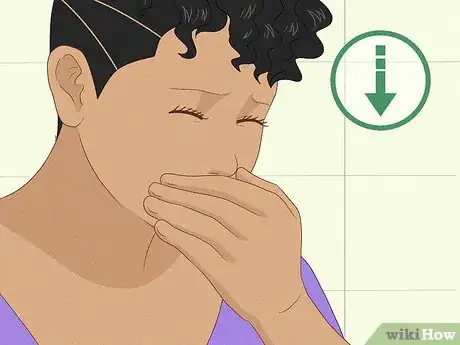
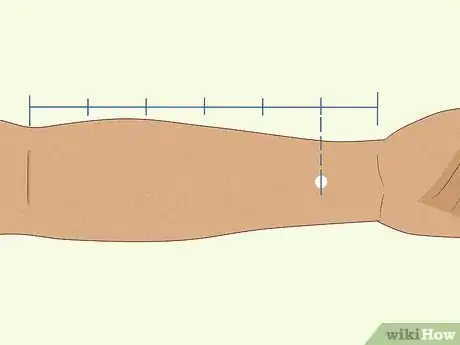
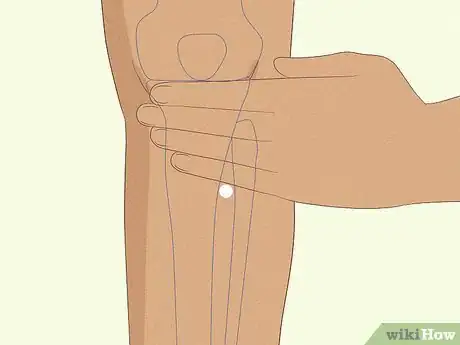
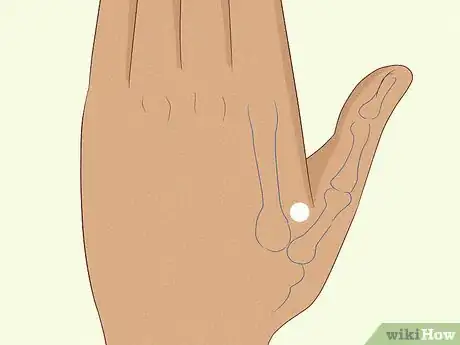
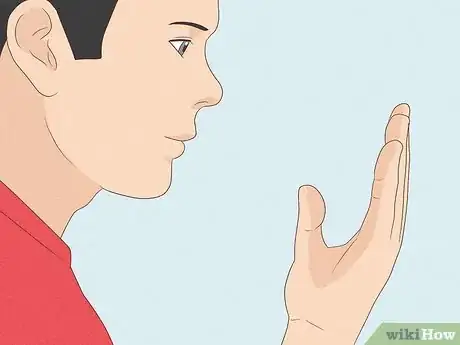
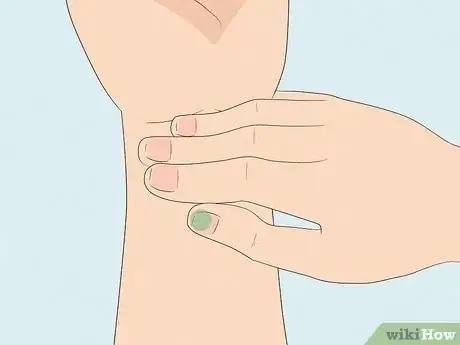
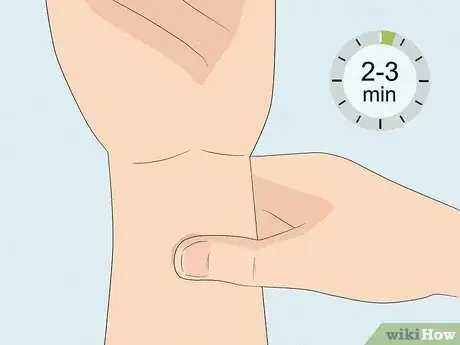
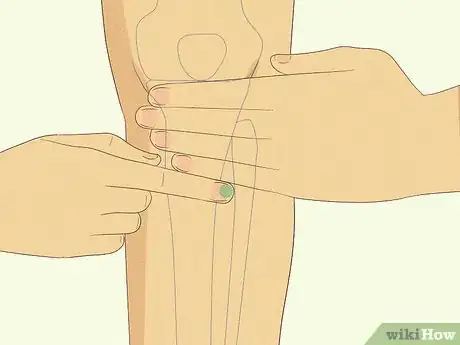
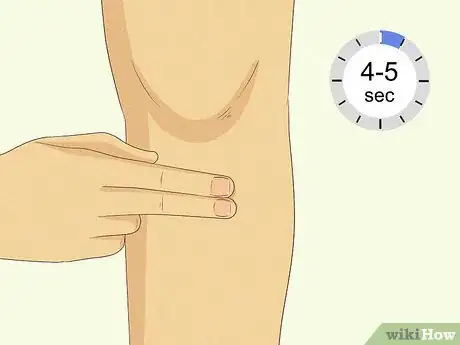
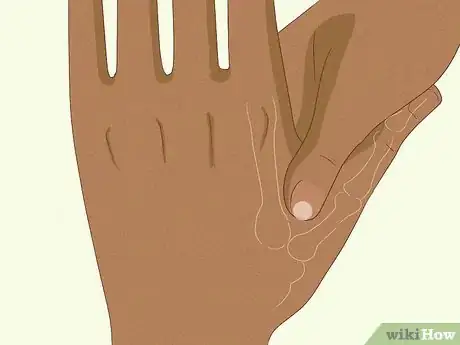
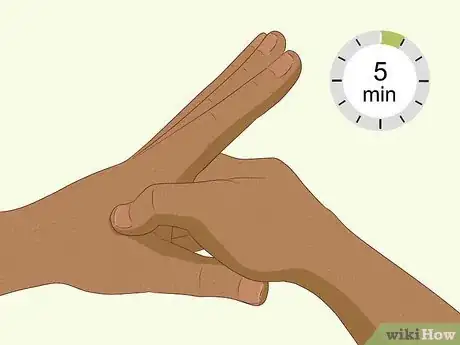

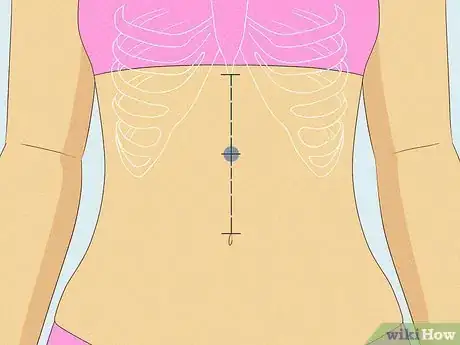
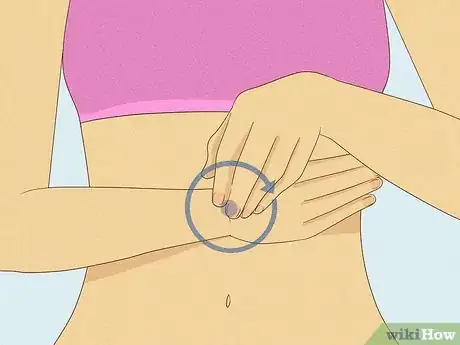
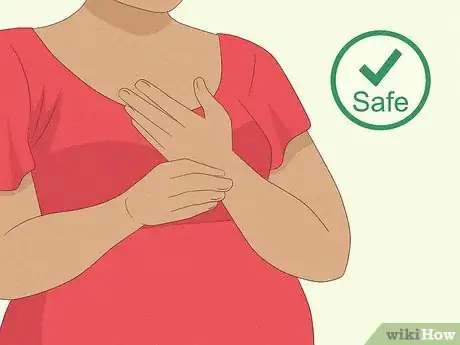
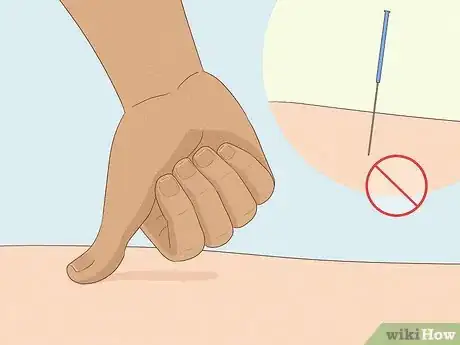
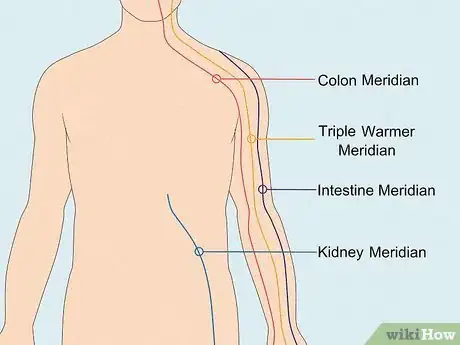





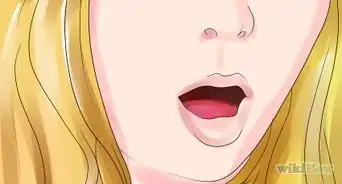

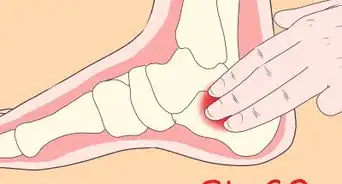
















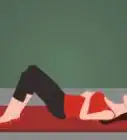




































Medical Disclaimer
The content of this article is not intended to be a substitute for professional medical advice, examination, diagnosis, or treatment. You should always contact your doctor or other qualified healthcare professional before starting, changing, or stopping any kind of health treatment.
Read More...